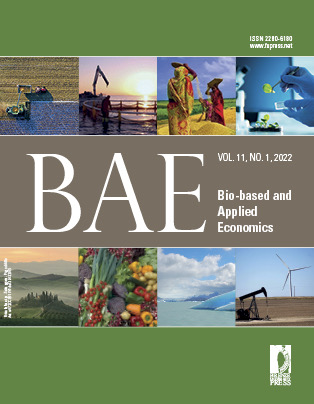Impacts of fertilizer subsidy reform options in Iran: an assessment using a Regional Crop Programming model
Published 2022-07-20
Keywords
- agricultural policy,
- fertilizer subsidy,
- land use effect,
- Regional Crop Model,
- Positive Mathematical Programing (PMP)
- Iran ...More
How to Cite
Abstract
The aim of this paper is to assess the potential impacts of different fertilizer subsidy reform options on the performance of the Iranian crops production sector. This is achieved using a Regional Crop Programming (RCP) model, based on Positive Mathematical Programming, which includes in total 14 crop activities and encompasses 31 administrative regions. The RCP model is a collection of micro-economic models, working with exogenous prices, each representing the optimal crop allocation at the regional level. The model is calibrated against observed data on crop acreage, yield responses to nitrogen application, and exogenous supply elasticities. Simulation results show that a total removal of nitrogen fertilizer subsidies would affect the competitiveness of crops with the highest nitrogen application rates and lead to a slight reduction of national agricultural income, at approximately 1%. This effect, which is more pronounced at the regional level, is driven by area reallocation rather than land productivity. The reallocation of nitrogen fertilizer subsidy to only strategic crops boost their production and income but increase disparity among regions and affects negatively welfare compared to the current universal fertilizer program. The transfer efficiency analysis shows that both target and universal simulated options are inefficient with an efficiency score below one.







